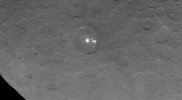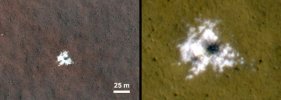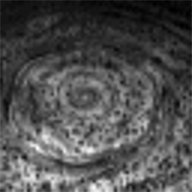Re: saturn retrograde
Nop, is not mentioned, as the brightly spots on Ceres,
I suppose they narrowed the possible candidates for the spots' contents after reviewing the voting they launched at the public.
And yes, later they confirmed it
I have been reading the ECHCC book along with a book about storms in space that do talks about the electric universe, certainly they are persistent in not talking about the electrical current flow.
edit quotes and verb tense
Added: images taken from here: _http://www.extremetech.com/extreme/206387-dawn-captures-ceres-mysterious-bright-spots-in-closest-yet-photo
Laura said:Speaking of Saturn:
http://spaceweather.com/
SATURN'S RINGS SURGE IN BRIGHTNESS: This Friday night, May 22nd, Saturn will be "at opposition"--that is, opposite the sun in the skies of Earth. The ringed planet rises in the east at sunset and soars through the southern sky at midnight, a golden "star" in the constellation Scorpius.
Whenever Saturn is at opposition, its rings surge in brightness. Why? Scroll down for the explanation.
And what a dumb explanation they come up with:
The brightening of Saturn's rings is called the "opposition effect." Saturn's rings are made of frozen chunks ranging in size from dust to houses. Sunlight directly backscattered from those ice particles causes the ring system to shine even more than usual for a few days around opposition. The exact mechanism involves shadow-hiding and possibly coherent backscattering.
Not a clue that such a line up facilitates electrical current flow through the system.
Which makes one wonder if there will be any effects of this on Earth?
Nop, is not mentioned, as the brightly spots on Ceres,
_http://www.space.com/29469-ceres-bright-spots-nasa-vote.html said:The puzzling white spots on the surface of the dwarf planet Ceres are definitely reflecting sunlight, scientists said, but the cause of the marks remains a mystery.
The newest batch of images from the Dawn spacecraft, which began orbiting Ceres on March 6, was released May 15. The data gleaned from these images has increased Dawn scientists' confidence ??? that the white spots are caused by reflected sunlight, and that idea can help them narrow down the possible candidates for the spots' contents.
I suppose they narrowed the possible candidates for the spots' contents after reviewing the voting they launched at the public.
With the release of these new images, NASA has asked the public to submit a guess for what is creating the spots: volcanos, geysers, rocks, ice, salt deposits, or "other." As of this writing, 37 percent of people who took NASA's poll for what the white spots might be said "other." Alien colonies, perhaps? About 30 percent of voters picked ice, with 10 percent opting for volcanoes. Geysers ranked next with 9 percent, followed by salt deposits (8 percent) and rock (6 percent)
And yes, later they confirmed it
"Dawn scientists can now conclude that the intense brightness of these spots is due to the reflection of sunlight by highly reflective material on the surface — possibly ice," Christopher Russell, principal investigator for the Dawn mission, said in a statement from NASA.
I have been reading the ECHCC book along with a book about storms in space that do talks about the electric universe, certainly they are persistent in not talking about the electrical current flow.
edit quotes and verb tense
Added: images taken from here: _http://www.extremetech.com/extreme/206387-dawn-captures-ceres-mysterious-bright-spots-in-closest-yet-photo



